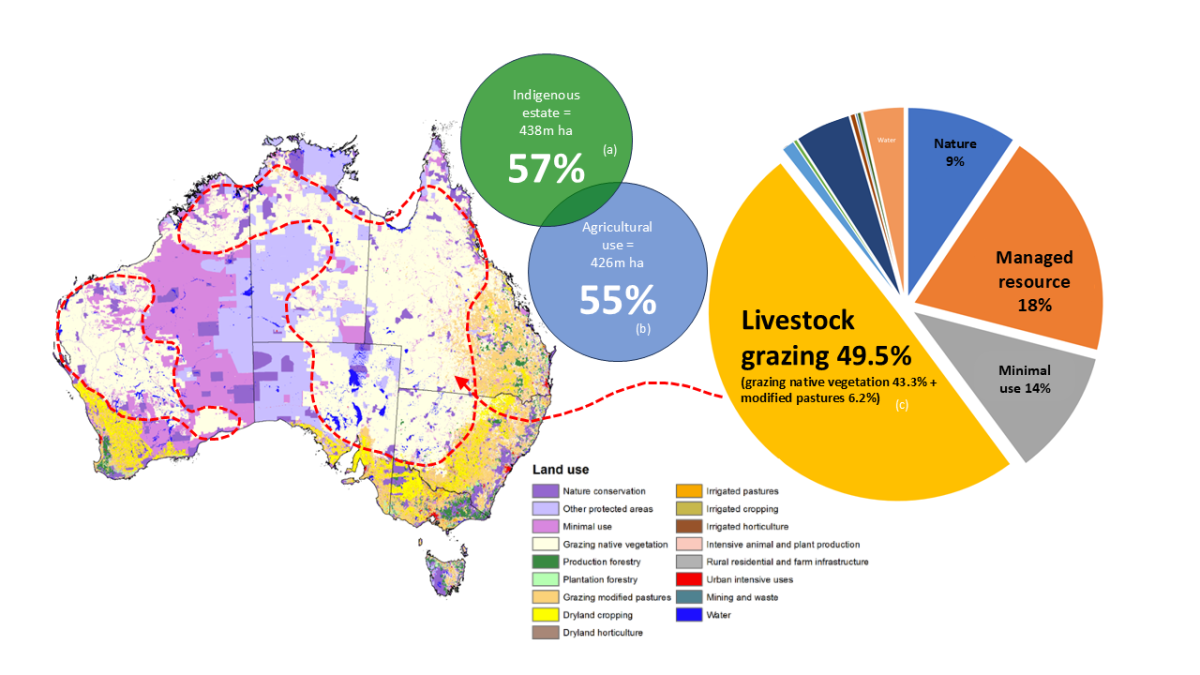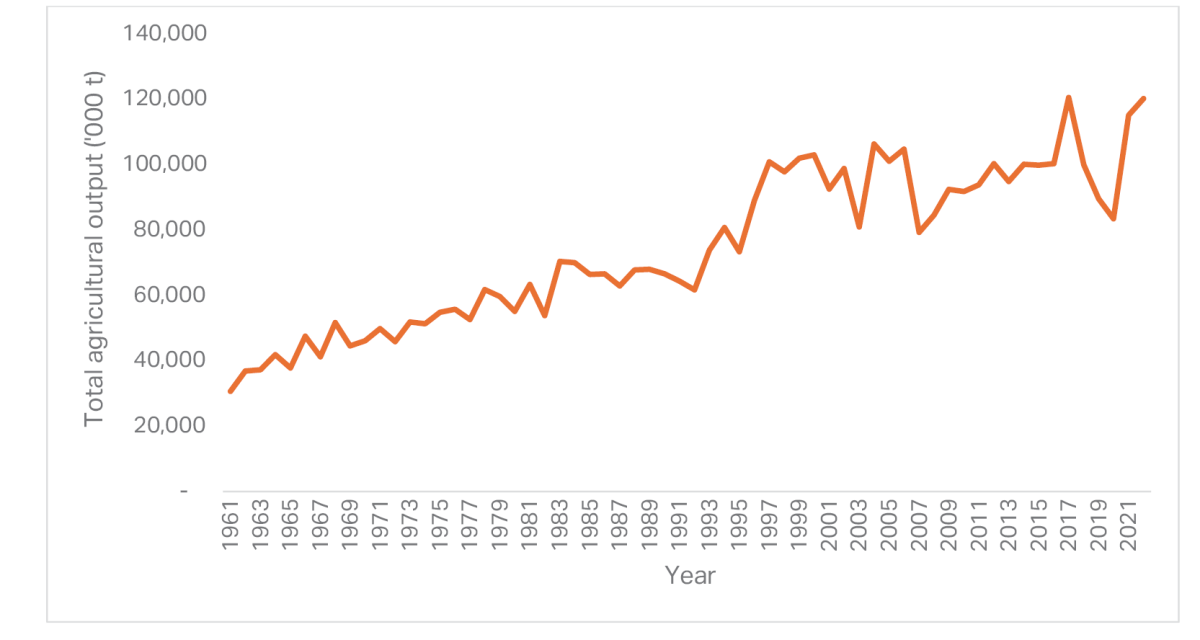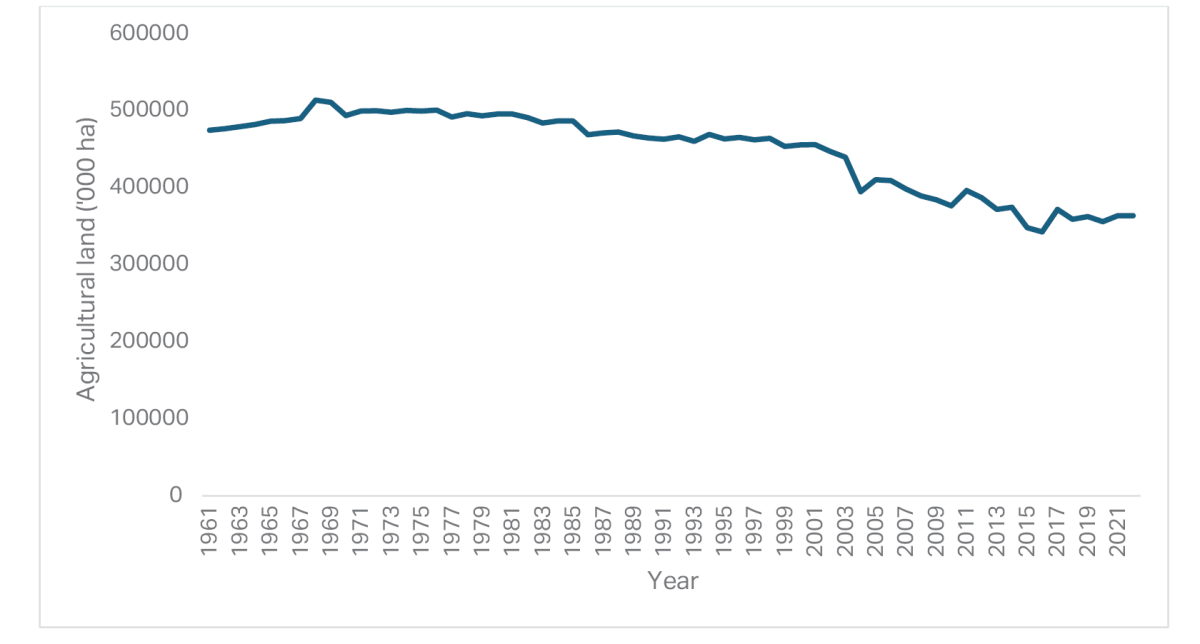The AFI is conducting research on managing agricultural land use competition in a decarbonising economy. This work is a component of CSIRO’s Ag2050 project, a multi-year program of work targeting transformational change to Australia’s farming systems.
Land use in Australia is a highly contentious issue across numerous economic sectors ranging from mining and energy production to agriculture and housing. As the largest user of land in Australia (Figure 1), agriculture is a primary stakeholder in this debate regarding both impact on and the impact of land use change trends.

Figure 1: How Australia uses land.
Sources: a) Jacobsen et al. (2020), Australia’s Indigenous land and forest estate: Separate reporting of Indigenous ownership, management and other special rights b) ABARES 2024 c) ACLUMP 2020 – Land use – DAFF.
Across all sectors of the economy, land use is not static. Land managers and owners have a multitude of options to consider on how to maximise productivity, economic investment, stewardship or other priorities. Among many options in a decarbonising economy, they may for example consider real estate development, renewable energy infrastructure development, agricultural production, the establishment of carbon sequestration and/or biodiversity management projects or other conservation initiatives on their property.
The dynamic nature of land use change in a transitioning economy is influenced by government policies and private sector commitments which typically require some proportion of a fixed land resource base. These policies span government housing accords and renewable energy adoption goals as well as corporate environmental conservation targets, among others. While all these policies require use of land to meet specific goals, the amount required as a portion of land currently dedicated to agricultural production is neither certain nor definitively quantified. Some choices may be complementary to agriculture (e.g. environmental conservation), while others may irrevocably change the land’s use (e.g. housing construction) to achieve intended outcomes.
Over time, Australian agriculture has adapted well to diverse land use demands while maintaining competitiveness in domestic and global markets. This is evidenced in part by comparing the long-term increase in agricultural output (Figure 2) with a trend of decreasing agricultural land area (Figure 3).

Figure 2: Volume of agricultural production from Australian agriculture (thousands of tonnes) 1961–2022.
Source: FAO (2024).

Figure 3: Area of land dedicated to agricultural production 1961–2022.
Source: FAO (2024).
The long-term drivers of land use change are not poised to drastically change in the midst of whole-of-economy decarbonisation. In such a transition, land use change may take place more rapidly than in previous years as land managers respond to evolving policy and corporate imperatives.
Agriculture and the sectors that influence land use outcomes must balance trade-offs to coexist in a way that facilitates economy-wide outcomes while discouraging negative impacts on Australian agricultural competitiveness and the wellbeing of rural communities. In order to design the policies that will promote this coexistence, the policy community must better understand how land use has changed over time and the real drivers of that change. For example, it is not clear how exactly much land has actually been converted from agriculture to dedicated renewable energy infrastructure or certified carbon sequestration projects over the past decade of growth in these areas. Conclusions which have drawn about these projects’ effect on nationwide agricultural land use may be proportionate or disproportionate with their impact.
The next stage of this research will focus on modelling to assess how different land-use and resource policies affect the amount of land available for agricultural production. Additionally, AFI will recommend policy options to manage competing land and resource uses across different decarbonisation pathways. This will enable policy-makers to better understand how land use may change in the future and what actions industry, government and land managers can take to deliver best practice outcomes for everyone.
The post IN THE PIPELINE: Managing competition for agricultural land use in a transitioning economy appeared first on Australian Farm Institute.